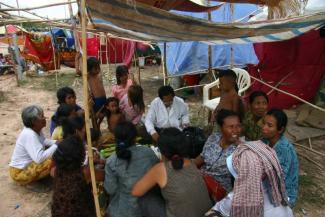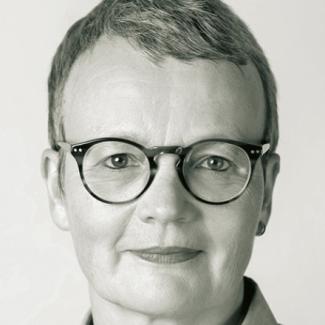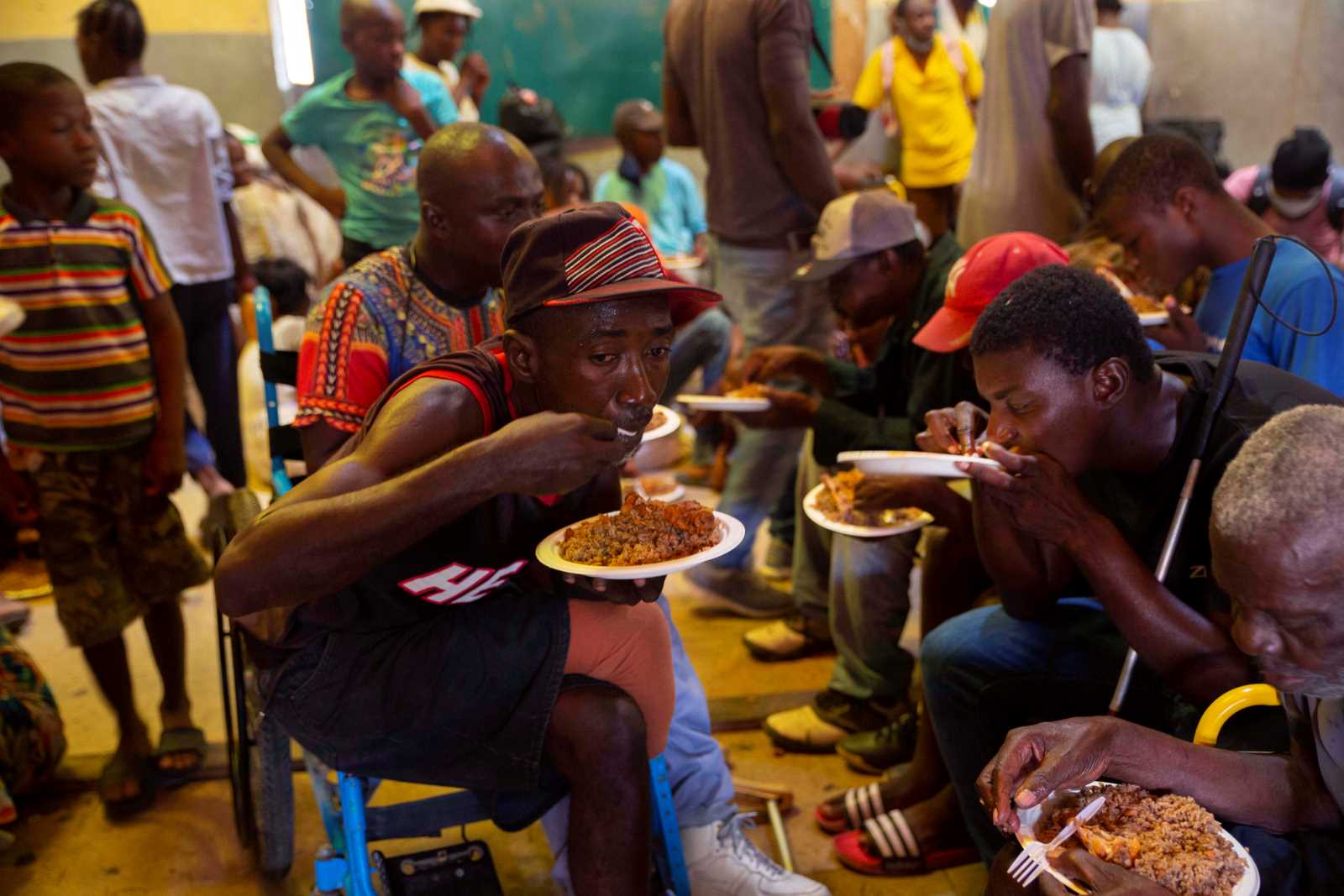Poverty
Major breakthrough

The SDG1 sets the target to eradicate extreme poverty for all people everywhere by 2030. It does not simply define a monetary poverty line; it also refers to other dimensions of poverty such as lack of access to land, social protection, technology, financial services and other resources.
While the SDGs are celebrated as a major breakthrough in defining and measuring dimensions of poverty, some critics say that the broad approach does a disservice to the poorest of the poor. They argue that countries can cherry-pick from the SDG list whatever they want instead of being forced to tackle the most pressing poverty issues (Klasen 2015).
The key indicator for measuring poverty, however, will continue to be the World Bank’s dollar-per-day-measure which allows to track poverty over time and across regions. Based on new data, the World Bank last year updated its former international poverty line of $ 1.25 per head and day to $ 1.90. The new sum is believed to reflect the purchasing power $ 1.25 had in 2005 – which in turn was supposed to cover what one dollar bought in 1985 (see box).
The World Bank researchers admit that definition and measurement remain “challenging endeavours”. Concepts, methods and data are subject to debate. “At the core of this debate is how to compare the standards of living of widely different peoples, consuming vastly different goods and services, all priced in different currencies,” the authors state (Ferreira et al. 2015).
Current situation
The World Bank Global Monitoring Report (GMR) 2015/16 assesses the current situation as follows: since 1990, the share of the world population living below the dollar-per-day poverty line has come down from nearly 40 % to nearly 10 % today. Nonetheless, some 700 million people are still estimated to live below that line. That number is expected to drop to between 340 and 480 million by 2030. The global share of extremely poor people would then be between 4.2 and 5.7 % of the world population. The World Bank, however, wants that share to fall below three percent.
In any case, the vast majority of extremely poor people (more than 85 %) will live in Sub-Saharan Africa (Ferreira et al. 2015). Experts emphasise that these numbers are mere estimates. “Everything beyond 2012 is essentially guesswork” (Sandefur 2015), as more recent and reliable data are not available.
The World Bank, however, is not only interested in monitoring and reducing extreme poverty. It also wants to monitor and expand what it calls “shared prosperity”, which is reflected in the growth of the per-capita income of a country’s poorest 40 % (see article "Counting statistics").
Currently, there is no progress on shared prosperity, as incomes are actually declining for the bottom 40 % in half of all heavily indebted countries and one third of moderately indebted countries, according to the World Bank. Moreover, the bottom 40 % of the population suffer deprivation in non-income dimensions of poverty as well.
Three challenges
The Wold Bank GMR identifies three challenges: the depth of remaining poverty, the unevenness in prosperity and persistent disparities in non-income dimensions of development. The authors make the following policy recommendations:
- recognise that poverty is multi-dimensional,
- focus more directly and fully on the poorest among the poor,
- make steady growth of the incomes of the bottom 40 % of the population happen,
- address widespread inequality of opportunities,
- implement human-development and social-protection policies and
- monitor the sustainability of development progress in all three dimensions (with a special focus on environmental concerns).
The acceptance of the idea that poverty is multi-dimensional is growing. There is however much less agreement on how to measure the various forms of deprivation and aggregate such information.
Two other approaches to poverty monitoring besides the shared prosperity approach of the World Bank deserve to be mentioned: economists such as Martin Ravallion and Andy Sumner are in favour of using several poverty lines, whereas the Oxford Poverty and Human Development Initiative (OPHI) has designed the Multidimensional Poverty Index which was adapted by the Human Development Index.
Multiple poverty lines
Ravallion (2015) states that two poverty lines are needed. The first should reflect a specific level of minimal purchasing power across all countries, and the second should indicate a poverty line that matches a given country’s average income.
Sumner similarly questions the usefulness of any single poverty line. In his eyes, such definitions are arbitrary. Indeed, changing the dollars-per-day poverty line by ten cents can mean that 100 million more – or fewer – people around the world are considered extremely poor. Sumner is in favour of using several poverty lines, including one of ten dollars per day and head (see Sumner: CGD blog 11.5.2015).
Sumner’s approach would draw greater attention to the distribution of wealth. Poverty cannot be tackled with growth in itself; the benefits of growth must be redistributed. Sumner insists that philanthropy and welfare systems have some impact, but “a world free of poverty and free of the risk of falling back into poverty ($ 10 per day) would require a very radical shift in the forms of contemporary capitalism” (Sumner 2015: CGD blog 9.9.2015).
Non-income measures
The Multidimensional Poverty Index (MPI) assesses 10 dimensions of poverty in more than 100 developing countries. The latest version (MPI 2015+) reflects the different types and dimensions of poverty as agreed in the SDGs, including poor sanitation, malnutrition, gender discrimination, quality of work and exposure to violence, for example. It matters that, when poor people describe their experience, they mostly refer to these dimensions themselves.
The MPI is most useful. Apart from providing a headline measure of multidimensional poverty within any population, the global MPI 2015+ reveals:
- in which senses people are poor,
- where the poorest people live (by region and social group), as well as
- the intensity of the deprivations.
The more policy-relevant information on poverty is made available, the better-equipped policy makers become to reduce it. Where most people lack education, for example, a poverty-reduction strategy must obviously be different from where most people lack adequate housing.
A growing number of governments and international institutions are adopting multidimensional poverty measures. To foster South-South support for this approach, 40 of them have founded the Multidimensional Poverty Peer Network (MPPN).
A new commission
Kaushik Basu, the World Bank’s chief economist, has convened a commission of 24 high-profile economists. They have been requested to answer the following questions by April 2016:
- What does it mean to hold the poverty line constant at the purchasing power of $ 1.25 in 2005 as reflected in the recent adjustment to $ 1.90 today even though prices and exchange rates keep changing?
- Should the World Bank also consider measures such as four-dollar and ten-dollar-per-day poverty lines?
- Should it assess the depth of poverty below the line?
- Should it collect and collate data on dimensions of poverty beyond the money metric?
Overall, the outlook for measuring poverty has improved considerably. In SDG1, the world has finally acknowledged that poverty is multidimensional and needs to be measured in different ways. Much needed progress is being made in defining and measuring poverty in its different dimensions. However, many challenges in terms of methods and data availability remain in practice.
Challenges for established donor governments are that:
- SDG1 applies to all nations, so they will have to assess poverty at the domestic level too, and
- all policy communities are called on to tackle poverty in all its dimensions.
Hildegard Lingnau wrote this essay in her capacity as senior counsellor at the OECD. She has since become the head of cooperation at the German Embassy in Kenya. This contribution reflects her personal views.
hildegard.lingnau@web.de
References:
Ferreira, F. H. G., et al, 2015: A global count of the extreme poor in 2012. World Bank:
http://documents.worldbank.org/curated/en/2015/10/25114899/global-count-extreme-poor-2012-data-issues-methodology-initial-results
Klasen, S., 2015: SDG – Den Ärmsten der Welt einen Bärendienst erwiesen. KfW:
https://www.kfw-entwicklungsbank.de/PDF/Download-Center/PDF-Dokumente-Development-Research/2015-09-22-MF_Klasen_en.pdf
Oxford Poverty and Human Development Initiative (OPHI):
http://www.ophi.org.uk/
Ravallion, M., 2015: The World Bank’s new global poverty line. CGD blog 7.10.2015:
http://www.cgdev.org/blog/world-bank%E2%80%99s-new-global-poverty-line
Sandefur, J., 2015: Nobel prizes, poverty numbers and tales of mythical creatures, CGD blog 15.10.2015.
Sumner, A., 2015: An End to Global Poverty: Philanthropy, Welfare Capitalism, or Radically Different Global Economic Model?, CGD blog 9.9.2015:
http://www.cgdev.org/blog/end-global-poverty-philanthropy-welfare-capitalism-or-radically-different-global-economic-model
Sumner, A., 2015: When Does One Dime = 100 Million People?, CGD blog 11.5.2015:
http://www.cgdev.org/blog/when-does-one-dime-100-million-people
World Bank Global Monitoring Report 2015/2016:
http://www.worldbank.org/en/publication/global-monitoring-report











